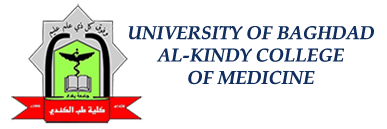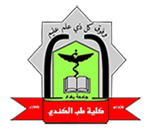History and Profile
The department of physiology was established in 1998, confirming the longstanding focus on medical physiology and physics of physiology, the department runs various undergraduate programs that are part of basic training of medical sciences students. The department consists of two main units: clinical physiology and medical physics. Both units are involved in teaching to undergraduate medical students in 1st and 2nd years. The lectures are aimed at providing a clear understanding of the hierarchical functional organizations of living systems. Teaching students in modern ways to increase their interest and also enhance their learning in medical physiology.
The goal
Physiology divisions: the goal is the teaching of human physiology and pathophysiology, for the advancement of the knowledge base of these subjects by research of basic physiological and pathophysiological mechanisms, and the training of undergraduate students in these sciences.
Medical physics division: applies the principles and methods of the physical sciences to human physiology (physics of physiology) and biomedical problems.
Objectives
- To cover a broad spectrum that ranges from the study of basic biomedical processes to the diagnosis and treatment of disease.
- To pursues application-oriented basic research projects devoted to the development of novel methods and technologies in medicine providing knowledge for the clinical partners and for the students.
- To establish the communication of the physiological and physical principles underlying modern medical technologies to medical students.
Teaching methodologies of the department:
The department has realized the importance of the ever changing demand for better standards and understanding of medical physics and physiology by the students. The following steps have been taken to improve medical education methodology in different areas, so to provide learning in several multi-dimensional areas.
Lectures
The department has introduced audio-visual aids for improving the students learning e.g. power point is frequently used by the teachers. Teachers are also encouraging an interactive environment during the lecture.
Tutorials
The methodology of tutorials has been radically changed, e.g. analysis of clinical scenarios based on knowledge of basic medical physics and physiology, use of interactive CDs. Most importantly, the concept of small group teaching will initiated. Their role is not to repeat lecture content but to involve students in increase their problem solving and communication skills. They are used specifically for medical student tutorials. They have weekly meetings with the respective course organizers on what clinical problem or cd will be presented to the students actual active participation of students in practical is encouraged.
All practical sections are based on their knowledge achieved during lectures. The results are fully discussed among the students and with the teachers. Students are divided into small groups, of about 25 students. Students are given relevant clinical and basic medical physics and physiology practical, which they perform and interpret themselves. The students are evaluated at the end of a practical and a practical exam is given at the end of the semester. This reinforces the theoretical knowledge and it cultivates self-confidence in them-selves. Recently, the department introduced the new set of experiments that allows students and researchers to perform complicated tests simply, giving easy computerized analysis and results. Tests include ECG, heart sounds, EMG, spirometry, neurophysiology, etc.
Student seminars:
The department organizes seminars on specific topics in the field of medical physics and physiology e.g. body fluids, ECG, MRI, NANO medicine, etc. All students are obliged to discuss the specified topic and their colleagues are given time to ask questions. Students are assessed by the teachers for confidence, content and presentation skills. To encourage students, some of them are selected to give these seminars again in front of the faculty and students involving them with continuous medical learning program (cml). Again the feedback is that these help the students increase content knowledge and communication skills.
| Name | Academic Degree | CV | Specialty | Title |
|---|---|---|---|---|
| Ikhlas Jawad Amer Ajeem Al-Saadi | PhD | CV | Physics / Medical Physics | Assistant Professor |
| Haider Sabah Hassan Mohammed Naji | PhD | CV | Physiology | Assistant Professor |
| Mohammed Abdul Amir Abdul Razzaq Mahdi Al-Fatelawi | PhD | CV | Philosophy in Physics | Lecturer |
| Bilal Sadiq Abdul Baqi Ibrahim Al-Ma'ruf | Master's | CV | Science in Physiology / Physiology | Assistant Lecturer |
| Ryan Ziad Khalaf Saad | Master's | CV | Science in Physiology | Assistant Lecturer |
| Hussein Ibrahim Hayal | Master's | CV | Biology | Assistant Lecturer |

